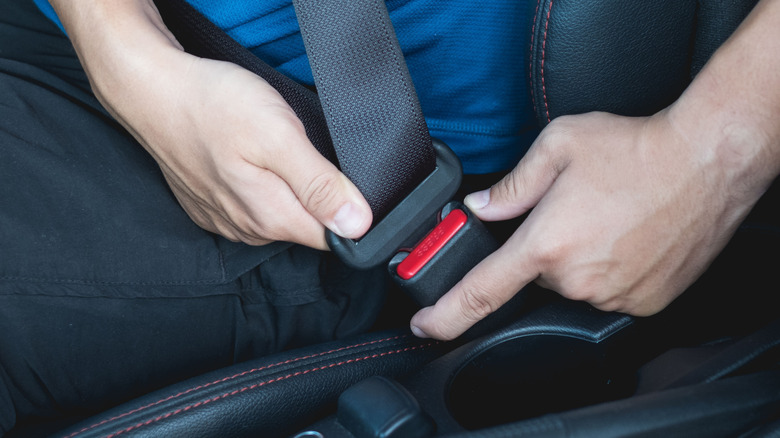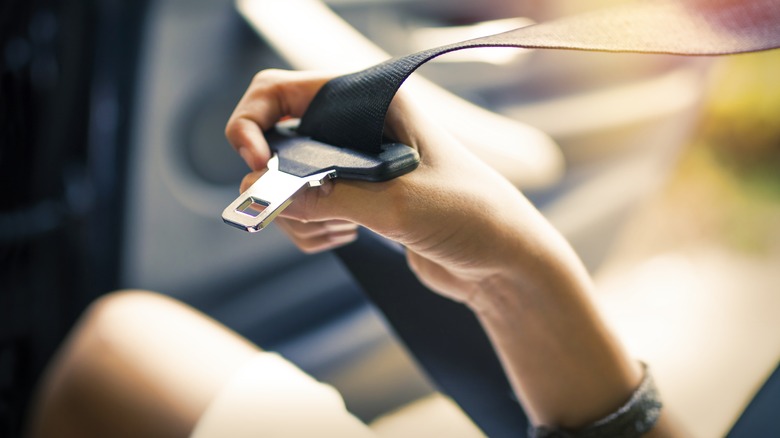The Anti-Seatbelt Movement Explained
When the beginnings of what became known as the "anti-mask movement" began to emerge in the first half of 2020, it prompted plenty of press from frustrated journalists — a columnist in the UK called British anti-maskers "selfish and a tad stupid" (via Knutford Guardian), while others tried to get anti-maskers to explain themselves (via Vox). Meanwhile, various studies were undertaken to study anti-maskers' "psychological reactance" — put simply, their unwillingness to be told what to do. But as the BBC notes, life-saving measures have often been met with unexpected resistance, including one that most people today have little problem adhering to: the use of seatbelts.
Though road safety has dramatically improved since their introduction, the dawning of seatbelt use in the 1980s faced fierce opposition, with Michigan Rep. David Hollister receiving a letter comparing him to Hitler for attempting to pass a bill fining drivers who didn't wear a seatbelt, according to Detroit Free Press.
Lobbying against seatbelts
According to CNN, the anti-seatbelt movement that emerged in response to legislation that started being introduced in the 1980s, wasn't simply the organic response of freedom-loving Americans looking to protect their rights. Rather, the row over seatbelts was stoked by big business — namely, the car companies whom CNN claims were worried about spiraling production costs hitting their profit margins, while their PR managers believed that the inclusion of seatbelts in car designs would imply that the car itself must therefore be unsafe, which would mean fewer sales.
The companies went out of their way to lobby legislators into allowing cars to continue being made without seatbelts, while concocting scare stories to share with the press which claimed that seatbelts could cause more fatalities than they save lives; the claims, which have been entirely debunked by Snopes, typically suggested that the danger of seatbelts was that they could keep you stuck in your seat if your car caught fire following a collision.
However, despite such underhand tactics, road safety experts won out and today seatbelt legislation exists in every U.S. state except for New Hampshire. Per CNN, American seatbelt use now stands at more than 90%, a dramatic increase from 14% in the 1980s.

